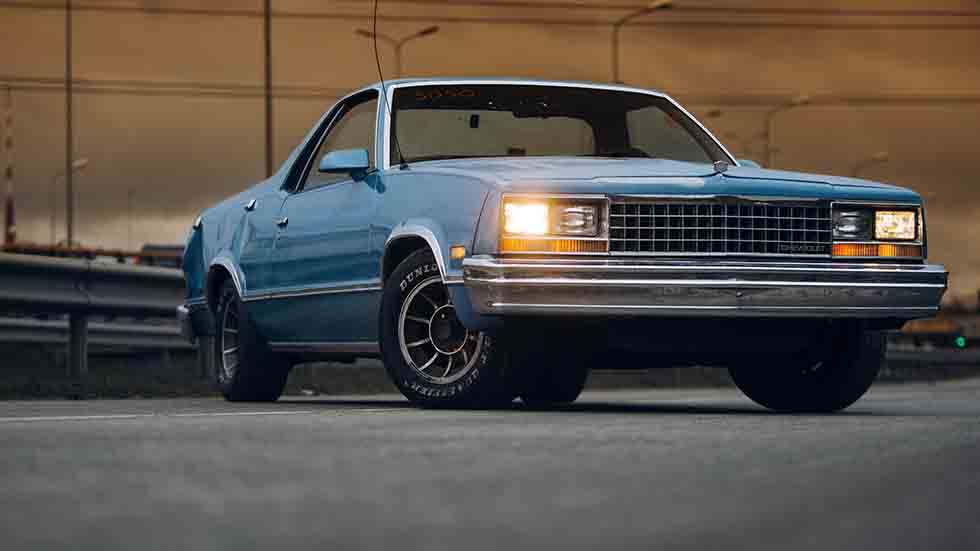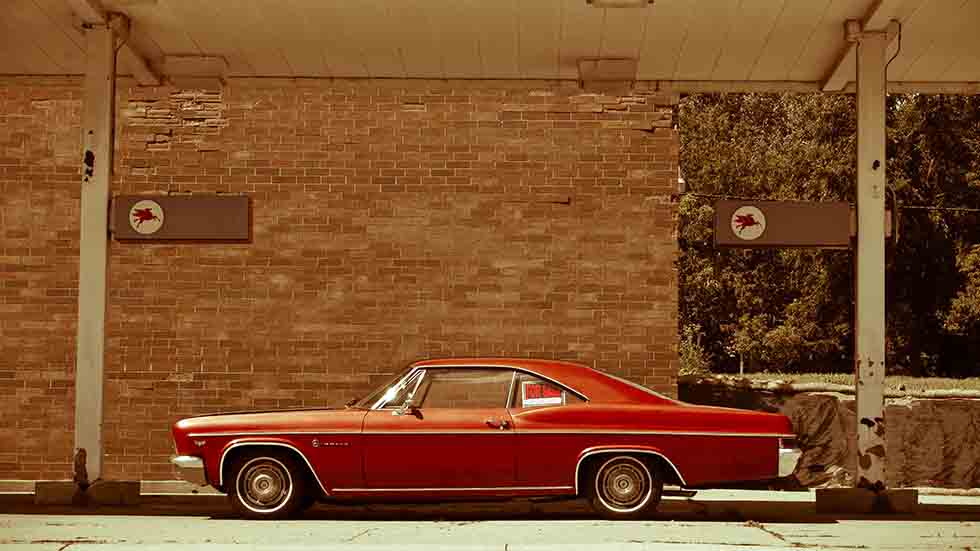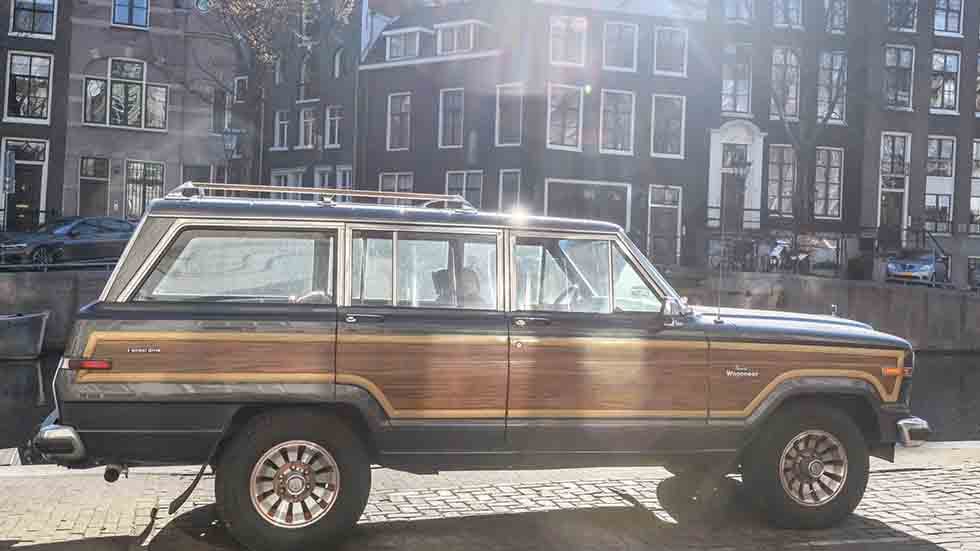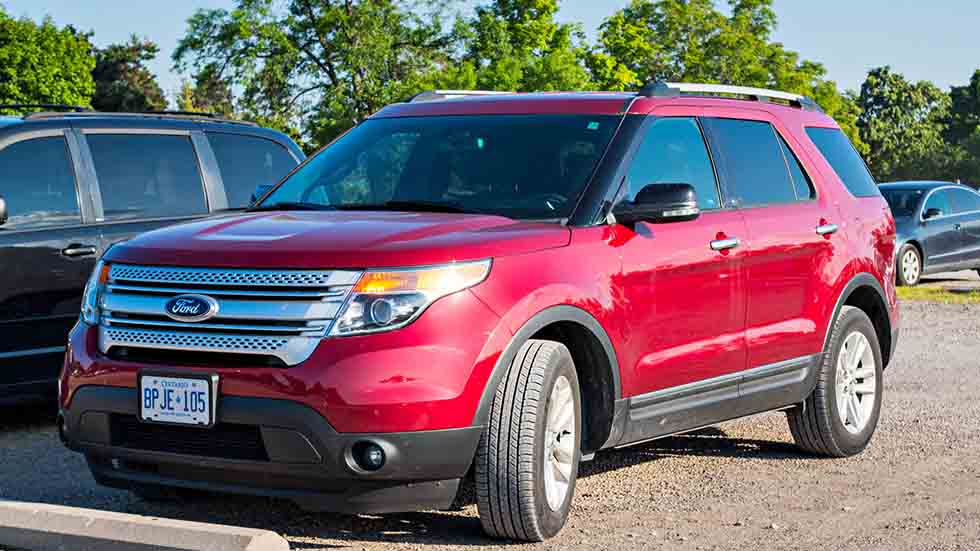

America's love affair with the automobile has a rich and storied history dating back to the earliest days of gas-powered travel. Due in part to the vast expanse of land between our coasts as well as a fierce, independent, and adventurous spirit instilled deep within us, the road trip has been an integral part of the fabric of American life in the past century.
With that in mind, we're taking a deeper look at some of the vehicles that helped us fall in love with the road trip and the features that made them unique.

Desoto Deluxe
DESOTO DELUXE
Produced from 1939 to 1952, the DeSoto Deluxe was an affordable sedan alternative that didn't come standard with the luxurious features of its more expensive counterparts. Chrysler launched the DeSoto brand in 1928, naming the brand after the famous 16th-century explorer, Hernando de Soto, so perhaps it's not surprising that this vehicle became standard road trip fare with its attractive price point pushing Chrysler to become the second-largest automobile manufacturer by 1939.
PONTIAC SAFARI
The Pontiac Safari was a 2-door sport station wagon produced starting in 1955 as an alternative to the Nomad. At the time of its launch, the Safari was Pontiac's most expensive model featuring upscale components like leather interior. Various iterations of the Safari station wagon graced Pontiac's line through the late 1980s and as a result, millions of Americans have fond memories of sitting in the "way back" staring, waving, and making peace signs at oncoming traffic.

Chevrolet El Camino
CHEVROLET EL CAMINO
With models first appearing in 1959, the El Camino enjoyed off-again on-again production through the late 1980s. The El Camino blended body styles of both sedans and pickup trucks. It could be argued that this made it one of America's first sport utility vehicles but it was classified in the U.S. as a pickup. In addition to its striking profile and unique appearance, original models were available with any of Chevrolet's full-sized drive trains, offering attractive customization options. Although not an ideal choice for a cross country road trip, the El Camino remains a pop culture icon and is still sure to turn heads wherever it goes.
AMC SPORTABOUT
A version of the classic AMC Hornet, the Sportabout was introduced in 1971 as a 4-door wagon that featured a liftgate-style back door unique in vehicles of its era. Designed to invoke the look and feel of muscle cars of the day, the Sportabout was designed to blend fun and practicality in a meaningful way for American drivers, making it a perfect road trip vehicle for many families.

Chevy Impala
CHEVY IMPALA
The Impala is one of those vehicles that's been around in one form or another since 1958. The Impala has been a launching point for many of Chevrolet's models over the years, like the Caprice. It was Chevrolet's most popular full-size model through the mid-1980s. Early Impalas featured a longer wheelbase than more expensive models as well as lower ride height and a wider footprint, making them roomier and perfectly tailored for long-distance road trips.

Mercury Park Wagon
MERCURY COLONY PARK WAGON
The Colony Park was Mercury's full-size station wagon between 1957 and 1991. It was distinguished by its famous wood paneling veneer and spacious interior. As minivans and 4-door SUVs became standard fare and station wagons became a thing of the past, the Colony Park ended production in 1991.
TOYOTA LITEACE VAN
Launched in 1971, the LiteAce was an upscale Toyota model designed to reside between Toyota's MiniAce and HiAce models. Although many van styles were available in America at the time, the LiteAce was designed with Japanese vehicle size regulations in mind. This meant external dimensions and a limited engine size provided drivers with the benefits of a full-size van while also helping them avoid additional taxes that came with owning larger vehicles like the HiAce.

Jeep Wagoneer
JEEP WAGONEER
Launched in 1963, Jeep's Wagoneer gets its name from the station-wagon-style rear end that's now become standard fare in SUV body styles. Originally marketed as a station wagon, its design was groundbreaking due to its 4x4 capabilities and instrumental in shaping our idea of what an SUV is. The Wagoneer's influence is profound and undeniable with many of its ideas and stylizations still being used on models today.

The Ford Explorer
FORD EXPLORER
Originally replacing the Ford Bronco II in 1991, the Ford Explorer quickly became a household name in America, outselling all other import SUVs combined. By 1994, the Explorer was the ninth best-selling vehicle in America. It was among the first American SUVs to feature a 4-door option, endearing it to many and widening its appeal to families.
